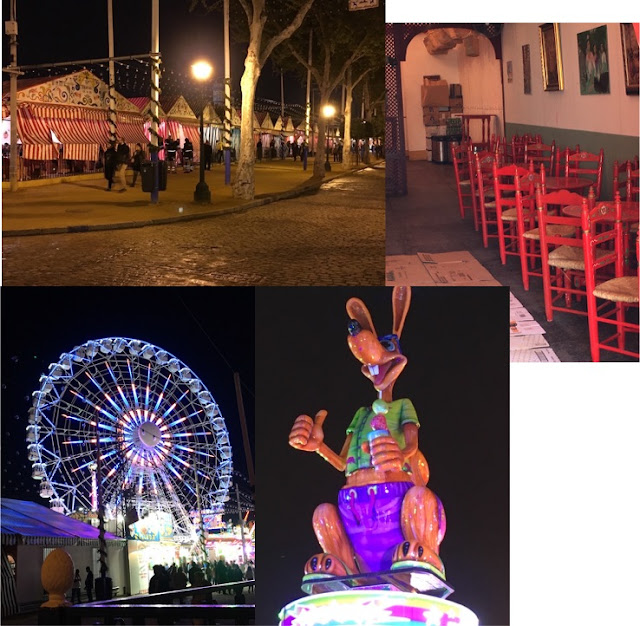El Rocío - April 21 - 25, 2018
We are again a month behind on updating our blog. El Rocío is a small town adjacent to Doñana National Park, perhaps the most famous of all natural areas in Europe, especially for the diversity of birds. El Rocío is quite different from other cities in Spain. The streets are not paved and a grader smooths the sand streets after heavy rains. The town footprint is much larger than would be expected for 23,000 inhabitants and the majority of buildings sit vacant most of the year. Walking the sandy streets is a little eery until you get use to it. The main claim to fame for the town is the annual pilgrimage that occurs at Pentecost, when about a million people (1,000,000!) arrive in the town and every available bed and space is taken. Every house has a railing in front to tie the horses that transport many of the pilgrims to the town, although many people walk alone with their horses and wagons. Legend has it that during the 15th century a woodman or hunter found a perfectly carved image of the Virgen, dressed immaculately in white, while working in the woods at this site. They built a church on the site where the Virgin was kept. Over the centuries, the Pilgrimage has grown, as well as the size of the church and adjacent places of worship. You are not allowed to photograph the Virgin.
 |
| The Church of the Virgen in El Rocío |
The town is very scenic, adjacent to a lake with grassy islands where flamingos and wild horses are seen.
 |
| El Rocío from across a corner of the lake |
To say the least, other than the week during Pentecost, the town is pretty quiet, attracting tourists that visit the church and surrounding area. The other attraction to tourists, and the reason for out visit, is the wildlife of Doñana National Park. The park includes forest and grasslands, but is mostly marsh during the wet season. One of the attractions is an opportunity to see the Iberian lynx, one of the few locations where they continue to live. We had seen the road signs warning people to slow for lynxes; cars are a major cause of mortality. We did not really expect to see one, but were very lucky during an early morning tour into the park.
 |
| Anita's photos of the Lynx and a pair of wild boars |
Other mammals we saw include lynx food (hares, rabbits, squirrels), deer, black rat, and water vole (another rare mammal). (Somewhere I read that water vole was an original ingredient of paella, although it may be a rumor started by the English.) After the lynx, birds are definitely the focus of the park and the attraction that brings many visitors throughout the year. They have constructed wonderful blinds for birders at several locations along the marsh. In four days we identified over 80 species of birds, but you could easily identify 150 or more with greater effort.
 |
| A picture of the inside of a blind for viewing birds and a white stork feeding in the marsh (flamingos are common, but always too far away for photos) |
It was nice to see storks feeding in the marsh and nesting in trees. Previously we had seen them feeding in a town dump and almost always nesting on churches, old buildings, and electrical towers; so it is nice to know they haven't completely forgotten their roots.
As always, Anita took many pictures of insects and flowers. We have really enjoyed traveling in the spring, with beautiful gardens in the cities and beautiful wildflowers in the country.
 |
| A few of the bugs Anita has posted to I-naturalist |
 |
| some of the wildflowers around El Rocío |
Spain is also famous for olives and when traveling by bus or train you often pass through olive orchards as far as the eye can see. Another claim to fame for El Rocío is the grove of ancient olive trees near the center of town, many several hundred years old, perhaps half a century. The old olive trees are wild, called acebuches, and are native to the historic forests of cork oak and carob.
 |
| Dining and posing under the ancient olive trees and passing alongside an olive orchard on the way to El Rocío |
Although the lynx may have been a highlight, the flowers, birds, and history were also enjoyable, not to mention the fabulous food. We were sad to leave, but excited to be on our way to Granada.




























